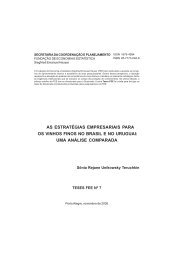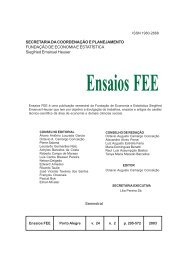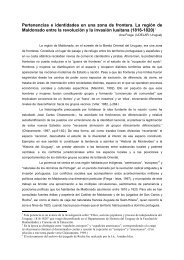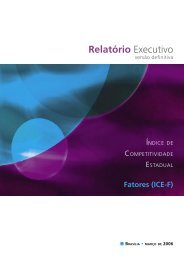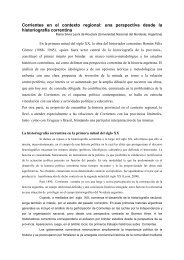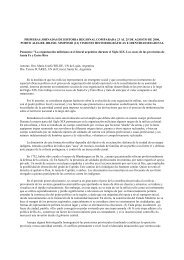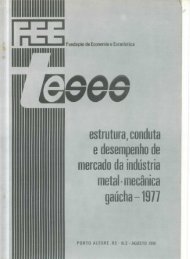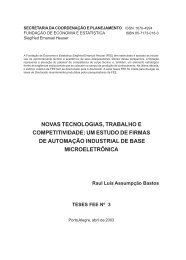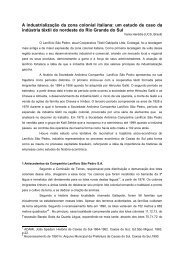séries univariantes de tempo - metodologia de Box & Jenkins
séries univariantes de tempo - metodologia de Box & Jenkins
séries univariantes de tempo - metodologia de Box & Jenkins
- No tags were found...
Create successful ePaper yourself
Turn your PDF publications into a flip-book with our unique Google optimized e-Paper software.
ABSTRACTThe present dissertation is concerned with the method <strong>de</strong>veloped byGeorge E. P. <strong>Box</strong> and Gwilym M. <strong>Jenkins</strong>.That methodology was <strong>de</strong>veloped during the sixties and published by theauthors in 1970 un<strong>de</strong>r the title "Time series analysis: forecasting andcontrol".The significance of <strong>Box</strong> and <strong>Jenkins</strong>' work is given by the possibilityof constructing linear mo<strong>de</strong>ls of the autoregressive integrated movingaverage type that could <strong>de</strong>scribe with precision and parsimony the stochasticprocess that generates a time series, offering therefore accurateforecasts.The strategy in that methodology consists in i<strong>de</strong>ntifying mo<strong>de</strong>ls ableto <strong>de</strong>scribe the data available, to efficiently estimate its parametersand to evaluate the mo<strong>de</strong>l "vis-S-vis" the phenomenon being invéstigated.If this representation of the real world is a<strong>de</strong>quate, the mo<strong>de</strong>l can beapplied in time series analysis or, on the contrary, if that representationis not a<strong>de</strong>quate, a new mo<strong>de</strong>l should be <strong>de</strong>signed and a new roundof tests run.The present dissertation is structured in seven chapters.Chapter I consists of not only the general question being posed andour concern about it justified, but we also <strong>de</strong>velop the fundamentali<strong>de</strong>as to <strong>de</strong>al with time series analysis: a short history of the subject,the importance and the statiscal meaning of the technique and the conceptproper of time series.In the chapter II we <strong>de</strong>velop the basic concepts of Stochastic Processthat will be useful for the un<strong>de</strong>rstanding and working of <strong>Box</strong> and<strong>Jenkins</strong>' methodology.In chapters III, IV and V we <strong>de</strong>al in <strong>de</strong>tail with <strong>Box</strong> and <strong>Jenkins</strong> 1 timeseries analysis: the mo<strong>de</strong>ls they use, the process of mo<strong>de</strong>ling and themethod for forecasting.In chapter VI, we apply the proceding <strong>de</strong>velopments to two sets of data,which are significant to the un<strong>de</strong>rstanding of Rio Gran<strong>de</strong> do Sul economy:the Consumer Price In<strong>de</strong>x (cost of living in<strong>de</strong>x) in the city of PortoAlegre and Electric Energy Comsumption in the State. 11 can be observedthat the forecasts obtained through <strong>Box</strong> and <strong>Jenkins</strong>' method showvalues very much close to the real data, making it clear about theusefulness of the author's methodology.The last chapter is a summary of the method discussed. We call attentionto its qualities but also to its operational shortcomings and we referto some other methods for time series analysis, trying to locate aspectsfor applying each one of them.



